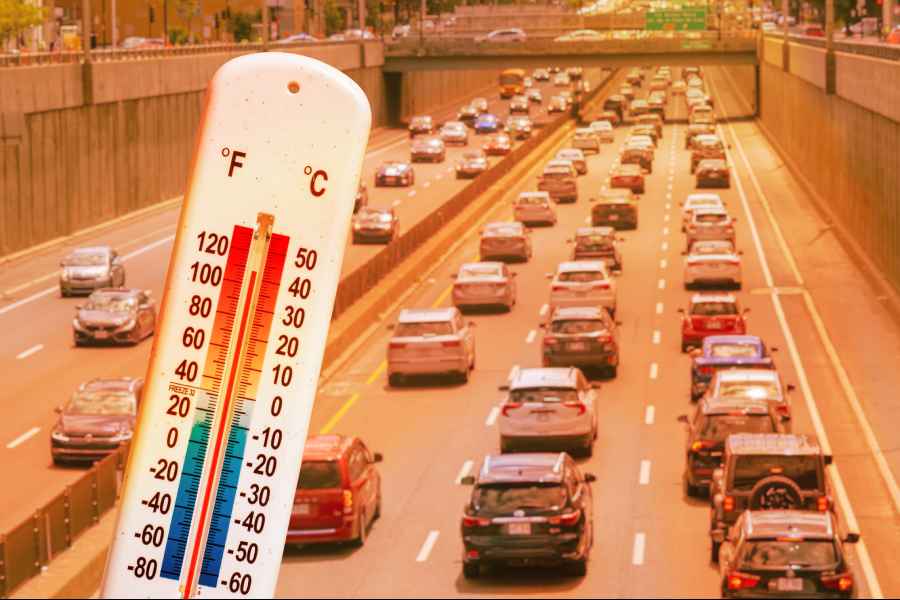South Bengal Heatwave: 5 Districts Face Extreme Temperatures

Table of Contents
Affected Districts and Temperature Readings
The South Bengal heatwave is most intensely felt across five districts: Bankura, Purulia, Birbhum, Bardhaman, and Nadia. These regions are experiencing significantly higher temperatures than the average for this time of year, creating a serious public health concern. Reliable sources, such as the Indian Meteorological Department (IMD), have recorded alarmingly high temperatures:
- Bankura: 45°C
- Purulia: 44°C
- Birbhum: 43°C
- Bardhaman: 42°C
- Nadia: 41°C
These readings represent a substantial deviation from the average temperatures typically recorded in these districts during this period, highlighting the severity of this South Bengal heatwave and the urgent need for preventative measures. The extreme temperatures pose a significant threat to the health and well-being of the population. The heatwave alert issued by the IMD underscores the seriousness of the situation.
Health Impacts and Precautions
Prolonged exposure to these extreme temperatures presents significant health risks. The South Bengal heatwave is causing widespread concern due to the potential for:
- Heatstroke: A life-threatening condition characterized by a high body temperature, confusion, and rapid pulse.
- Dehydration: A dangerous lack of fluids in the body, leading to fatigue, dizziness, and potentially more serious complications.
- Sunstroke: A severe form of heatstroke caused by direct exposure to the sun.
To mitigate these risks and stay safe during the heatwave, residents are urged to follow these precautions:
- Drink plenty of fluids: Stay hydrated by consuming water, ORS solutions, and fruit juices regularly throughout the day.
- Avoid strenuous activity during peak heat hours: Limit outdoor activities between 11 AM and 4 PM when temperatures are at their highest.
- Wear light-colored, loose-fitting clothing: This helps to reflect sunlight and keep you cooler.
- Use sunscreen with a high SPF: Protect your skin from harmful UV rays.
- Stay in cool, shaded areas: Seek refuge in air-conditioned spaces or shaded areas whenever possible.
- Check on vulnerable individuals: Pay special attention to the elderly, children, and those with pre-existing health conditions.
Government Response and Aid Efforts
The government is actively responding to the South Bengal heatwave crisis through various initiatives. Heatwave shelters have been established in affected districts to provide temporary relief to those most vulnerable. The state government, along with local authorities, is undertaking water distribution programs to ensure access to clean drinking water. Public health advisories are being widely disseminated through various channels, educating the public on heatstroke prevention and other necessary precautions. Agencies like the Disaster Management Department and the Health Department are playing a crucial role in coordinating relief efforts and providing support to affected communities.
Duration and Forecast Predictions
The IMD forecasts that the South Bengal heatwave will persist for the next [Insert number] days. While a slight decrease in temperatures is predicted towards the end of the week, residents should remain vigilant. For updated information and detailed forecasts, refer to the IMD website ([Insert Link to IMD Website]) and other credible weather sources. Monitoring the temperature forecast is essential to make informed decisions about daily activities and to take appropriate precautions.
Long-Term Impacts and Climate Change
The severity of this South Bengal heatwave highlights the increasing frequency and intensity of extreme weather events, a trend strongly linked to climate change and global warming. The long-term impacts of such heatwaves could include agricultural losses, water scarcity, and increased health burdens on the population. Addressing climate change through sustainable practices and policy interventions is crucial to mitigating the risk of future extreme heat events.
Conclusion:
The South Bengal heatwave presents a significant and ongoing threat to five districts. Heeding the safety advice outlined above, supporting government relief efforts, and staying informed about the latest forecasts are crucial. By understanding the severity of this South Bengal heatwave and taking proactive steps, we can collectively work to minimize the impact of this extreme weather event and protect vulnerable populations. Continue to check for updates on the ongoing South Bengal heatwave and stay safe.

Featured Posts
-
 Canelo Vs Crawford Fight Details Promoter And Platform Announcement On May 3rd
May 04, 2025
Canelo Vs Crawford Fight Details Promoter And Platform Announcement On May 3rd
May 04, 2025 -
 Tioga Downs 2025 Racing Season What To Expect
May 04, 2025
Tioga Downs 2025 Racing Season What To Expect
May 04, 2025 -
 Canelo Alvarezs Marriage Advice To Newly Engaged Jake Paul
May 04, 2025
Canelo Alvarezs Marriage Advice To Newly Engaged Jake Paul
May 04, 2025 -
 Formula 1s Global Rise The Influence Of Ceo Stefano Domenicali
May 04, 2025
Formula 1s Global Rise The Influence Of Ceo Stefano Domenicali
May 04, 2025 -
 Googles Dominance In Online Advertising Challenged By U S Action
May 04, 2025
Googles Dominance In Online Advertising Challenged By U S Action
May 04, 2025
